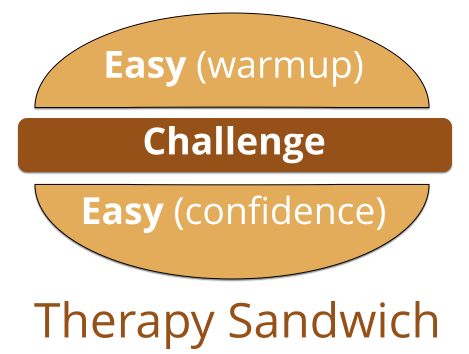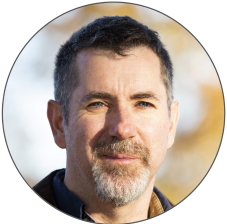Set speech & language goals with treatment software
Quickly find an Easy and Hard level for the patient to work toward
You'll repeat this process with each Bungalow PC program (or with each Skill Areas if you're using MoreSpeech.com, our web app).
- If you haven't already, choose a programs using the Therapy Advisor
- Try each Lesson and find the highest level Lesson that the survivor can
do easily (90-100% correct). I.e., the hardest Lesson that's
easy for them.
-
 The PC programs are organized into Lessons
of increasing difficulty. Some survivors may find the lower level
Lessons actually harder than the higher ones.
The PC programs are organized into Lessons
of increasing difficulty. Some survivors may find the lower level
Lessons actually harder than the higher ones. - Try a few exercises in each Lesson until you get to the highest level that they still find easy.
- Once you get to a Lesson that is most challenging for them (in that program) but in which they are still about 90-100% correct, you're ready for the next step.
-
- Find a challenging lesson (in that program); where
they get about 60-80% of the exercises correct on the first attempt.
Pay attention to how frustrated they are. If they are easily frustrated then hard for them might be at the 80% end; otherwise hard might be at the 60% correct end. - If all the Lessons are too easy then it's probably not a good program for challenging them and it would be good to move on to the next program.
- If they find all the Lessons too hard ( less than about 60% correct) or they are too frustrated then it would be good to wait and try that program again later.
-
 You should now have an
Easy and a Hard Lesson in that program.
You'll then apply what I call the
Therapy Sandwich method of Easy-Hard-Easy in each session.
They warm-up with the Easy Level, then do the Hard level, which is the
real meat of the session where you make their brain work and grow.
Then you end back on that Easy level so they finish with success.
You should now have an
Easy and a Hard Lesson in that program.
You'll then apply what I call the
Therapy Sandwich method of Easy-Hard-Easy in each session.
They warm-up with the Easy Level, then do the Hard level, which is the
real meat of the session where you make their brain work and grow.
Then you end back on that Easy level so they finish with success.
Want free treatment materials

work on your goals?

work on your goals?
Every day is an opportunity for recovery. Don't miss a single day.
- Surprising neuroscience discovery that makes recovery possible at any age.
- Why embracing failure leads to faster recovery.
- Unlock your survivor's communication needs in 4 steps.
- How to improve speech & language at the kitchen table.
Clay Nichols
Co-founder of
MoreSpeech and
Bungalow Software
for unlimited speech therapy at home and in the clinic.
 For
3 decades, Clay has helped patients, caregivers and speech pathologists
with speech & language software. He is not a speech-language
pathologist.
For
3 decades, Clay has helped patients, caregivers and speech pathologists
with speech & language software. He is not a speech-language
pathologist.
© 2025 Bungalow Software